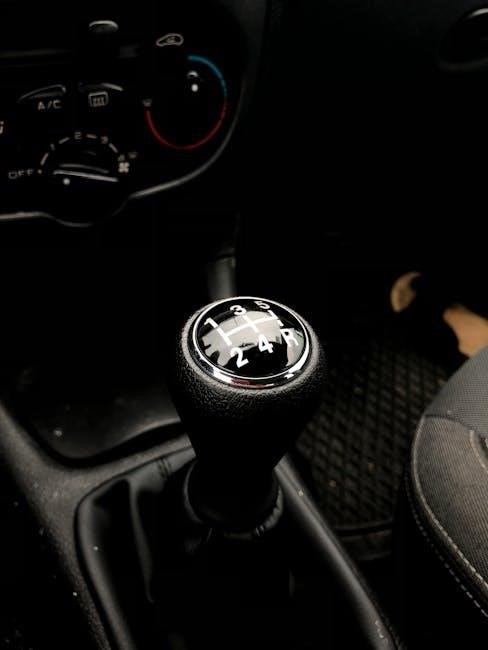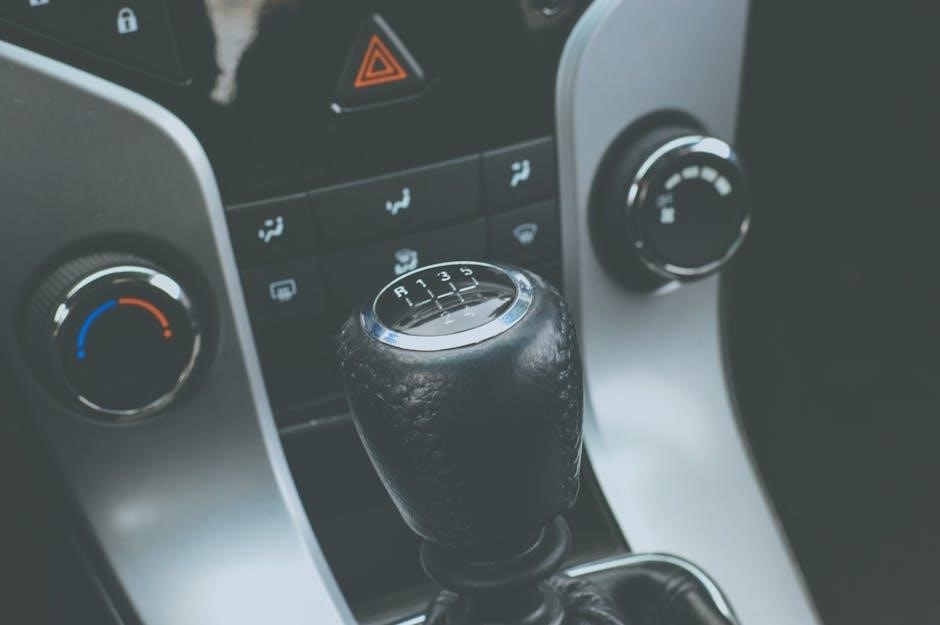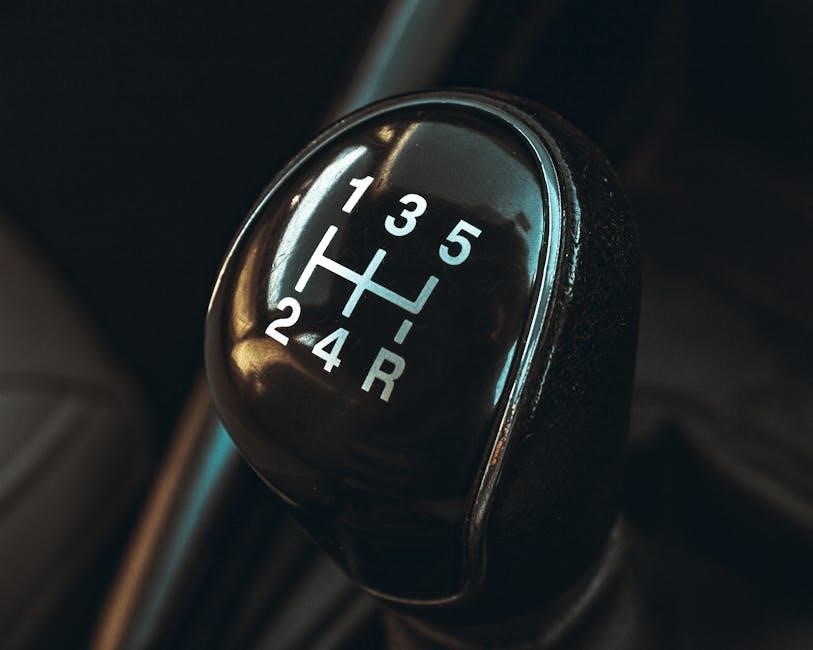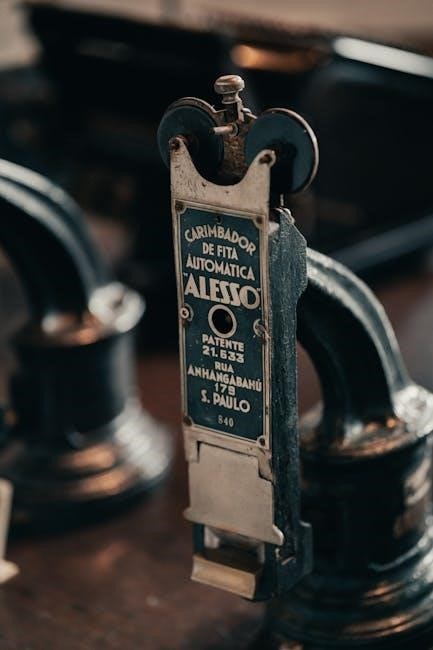Overview of Manual to Automatic Transmission Conversion
Switching from a manual to an automatic transmission involves replacing the entire system. This includes the gearbox, shifter, and associated components. The process requires expertise and can significantly alter the vehicle’s driving dynamics and performance characteristics.
Is Conversion Feasible and Worthwhile?
Before diving into a manual to automatic transmission conversion, it’s crucial to assess both the feasibility and potential benefits. The complexity hinges on the vehicle’s make, model, and available conversion kits. Consider if the expense justifies the convenience, weighing factors like driving style, long-term costs, and any impact on the car’s resale value. A specialist can offer tailored advice, ensuring an informed decision about this significant modification.
Cost Considerations for Conversion
Converting from manual to automatic involves significant expenses. These include the automatic transmission unit, labor, and potential modifications. Evaluating all costs upfront is essential for budgeting and deciding if the conversion is financially viable.
Initial Costs: Parts and Labor
The initial costs are substantial, primarily driven by the automatic transmission unit. Prices vary widely, from $1,000 to $4,000, based on the make, model, and quality. Labor costs, reflecting the complexity, range from $500 to $1500, depending on the mechanic’s expertise and shop rates. Additional parts such as torque converters and flexplates also contribute to the initial investment significantly.
Long-Term Costs: Fuel Efficiency and Maintenance
Post-conversion, anticipate potential long-term costs affecting fuel efficiency and maintenance. Automatic transmissions, while convenient, may lead to a slight dip in fuel economy, especially for those clocking significant monthly mileage. Maintenance costs could increase due to the complexity of automatic systems. Regular servicing and potential repairs to the torque converter or transmission control module (TCM) should be factored into the overall long-term expenses.

Key Components Required for Conversion
Converting to an automatic transmission necessitates specific key components. This includes an automatic transmission unit, a torque converter, a flexplate, and potentially a new shifter and updated electrical system. The compatibility of these parts is crucial.
Automatic Transmission Unit
The automatic transmission unit itself is the core component for the conversion. Selecting a compatible unit is paramount, considering the vehicle’s make, model, and engine specifications. The transmission control module (TCM) manages gear shifts. Proper installation ensures seamless gear transitions. The unit’s gear ratios will impact acceleration and fuel efficiency. Its overall condition significantly affects the reliability and longevity of the converted system. Professional guidance is advisable for choosing the appropriate automatic transmission unit.
Torque Converter and Flexplate
A torque converter replaces the clutch, providing smooth power transfer in an automatic system. It allows the engine to run even when the wheels are stopped. The flexplate connects the torque converter to the engine’s crankshaft. It replaces the flywheel used in manual transmissions. Compatibility between the torque converter, flexplate, and transmission is essential for optimal performance. Incorrect parts can lead to vibrations or transmission failure. Professional installation ensures proper alignment and functionality of these critical components.
The Conversion Process: A Step-by-Step Guide
Converting from manual to automatic involves several key stages. These stages include removing the old manual system, installing the new automatic transmission, and updating the vehicle’s electronics. This process requires technical skill and precision.
Removal of Manual Transmission Components
The initial phase involves carefully disconnecting and removing the existing manual transmission system. This includes detaching the driveshaft, shift linkage, clutch assembly, and any associated hardware. Proper support is crucial to prevent damage to the vehicle’s frame or other components. All parts should be labeled and stored methodically. This ensures a smooth reinstallation process if reverting to the manual system becomes necessary later, or for reference during the automatic system installation.
Installation of Automatic Transmission System
Installing the automatic transmission begins with mounting the new unit into the vehicle’s chassis. This often requires modifications to the transmission tunnel or crossmember. The torque converter is then attached, followed by connecting the appropriate cooler lines and electrical wiring. Precise alignment is crucial to prevent vibrations and ensure proper function. After securing the transmission, the shifter cable and any necessary sensors are connected, concluding the mechanical installation phase. Careful attention to detail is vital for a reliable and safe conversion.

Impact on Vehicle Performance After Conversion
Converting to an automatic transmission influences acceleration, fuel efficiency, and overall driving experience. Expect changes in responsiveness, shift points, and potentially a difference in top speed compared to the manual setup.
Changes in Acceleration and Top Speed
After converting from a manual to an automatic transmission, expect potential alterations in your vehicle’s acceleration. Automatics may offer smoother, but possibly less aggressive, acceleration. Top speed could also be affected, depending on the automatic transmission’s gear ratios compared to the original manual. This is usually due to differences in how power is delivered across various speeds. This directly impacts the engine’s torque and speed capabilities on the vehicle.
Effects on Fuel Efficiency
Converting from a manual to an automatic transmission can influence fuel efficiency. Generally, automatics might lead to a slight decrease in fuel economy, especially in older models. Modern automatics, however, can sometimes rival or even surpass manual transmissions in fuel efficiency due to advanced electronic controls and more gears. If you are clocking more than 1000 km per month, this dip can be a costly change, so consider that.
Finding a Qualified Transmission Specialist
Locating a skilled transmission specialist is crucial for a successful conversion. Look for experienced professionals with expertise in both manual and automatic systems. A specialist will guide you and ensure the job is done right.
Importance of Professional Expertise
Converting from manual to automatic requires extensive technical knowledge. Professional expertise is paramount because the process involves intricate mechanical and electrical modifications. A qualified specialist ensures proper installation, compatibility, and safety. Incorrect installation can lead to performance issues, damage, or even safety hazards. Their knowledge can prevent costly mistakes and ensure the vehicle operates reliably after the conversion. They can also address specific vehicle requirements. Therefore, hiring a professional is an investment.
Factors to Consider When Choosing a Specialist
Selecting the right transmission specialist is crucial for a successful conversion. Consider their experience with similar conversions and specific vehicle models. Check their certifications and customer reviews to gauge their reliability and expertise. Ensure they offer a warranty on their work and use quality parts. A reputable specialist will provide a detailed estimate and clearly explain the conversion process. Communication skills and transparency are also important. Ultimately, choose a specialist who inspires confidence and has a proven track record of successful conversions.

Potential Drawbacks of Automatic Conversion
Converting from manual to automatic can introduce drawbacks. These include increased costs, potential decrease in fuel efficiency, and possible reduction in resale value. The complexity of the conversion may also present challenges.
Reduction in Resale Value
A significant factor to consider when converting from a manual to an automatic transmission is the potential impact on the vehicle’s resale value. Many car enthusiasts and buyers specifically seek out manual transmissions for their engaging driving experience and perceived sportiness. Converting to an automatic may limit the pool of potential buyers, thus lowering the car’s market value. This is due to the alteration from the original factory configuration.
Complexity and Time Commitment
Converting a manual transmission to an automatic one is a complex undertaking requiring extensive mechanical knowledge and specialized tools. The process involves removing the existing manual components and installing a completely new automatic system, which can be time-consuming. Finding a qualified technician and scheduling the work can further extend the timeline. Expect the conversion to take several weeks, potentially disrupting your daily transportation needs. The intricate nature of the conversion should not be underestimated.

Alternatives to Transmission Conversion
Before committing to a conversion, consider alternatives. This includes purchasing a new or used automatic vehicle. Weigh the total cost against the conversion expenses, factoring in long-term maintenance and potential resale value implications.
Purchasing a New Automatic Vehicle
Opting for a new vehicle equipped with an automatic transmission presents a straightforward alternative to undergoing a manual-to-automatic conversion. This approach eliminates the complexities and potential pitfalls associated with modifying an existing vehicle. Furthermore, a new car offers the advantage of modern features, updated safety technology, and a comprehensive warranty, providing long-term peace of mind and reliability for the driver and any passengers.
Weighing the Pros and Cons
Before committing to an automatic transmission conversion, carefully evaluate the advantages and disadvantages. Consider the initial expenses, potential long-term maintenance, and any effects on fuel efficiency. Also, take into account the potential reduction in resale value. Conversely, weigh the benefits of automatic driving, improved comfort, and convenience. A thorough analysis will help determine if the conversion is economically and practically sound for your specific needs.
Considerations for Specific Vehicle Models
Vehicle-specific factors greatly impact the feasibility of a transmission conversion. Compatibility, modifications, and adjustments will depend on your make and model. Research and professional consultation are critical before proceeding with any work.
Compatibility of Parts and Systems
Ensuring the correct automatic transmission unit fits your vehicle is paramount for a successful conversion. Different models have varying engine configurations and drivetrain layouts. The automatic transmission must be compatible with the existing engine management system. Wiring harnesses and sensor inputs must also integrate seamlessly. Consult a specialist to verify compatibility and avoid costly errors. This ensures smooth operation and avoids potential damage.
Necessary Modifications and Adjustments
Converting to an automatic transmission often necessitates modifications to the vehicle’s structure and systems. Transmission mounts may need relocation or reinforcement to accommodate the new unit. The driveshaft length may require adjustment, and the shifter linkage will need replacement. Electrical wiring needs modification to integrate the automatic transmission’s control system. The cooling system should be upgraded to handle the additional heat generated by the automatic transmission. Professional installation ensures these changes meet safety standards.